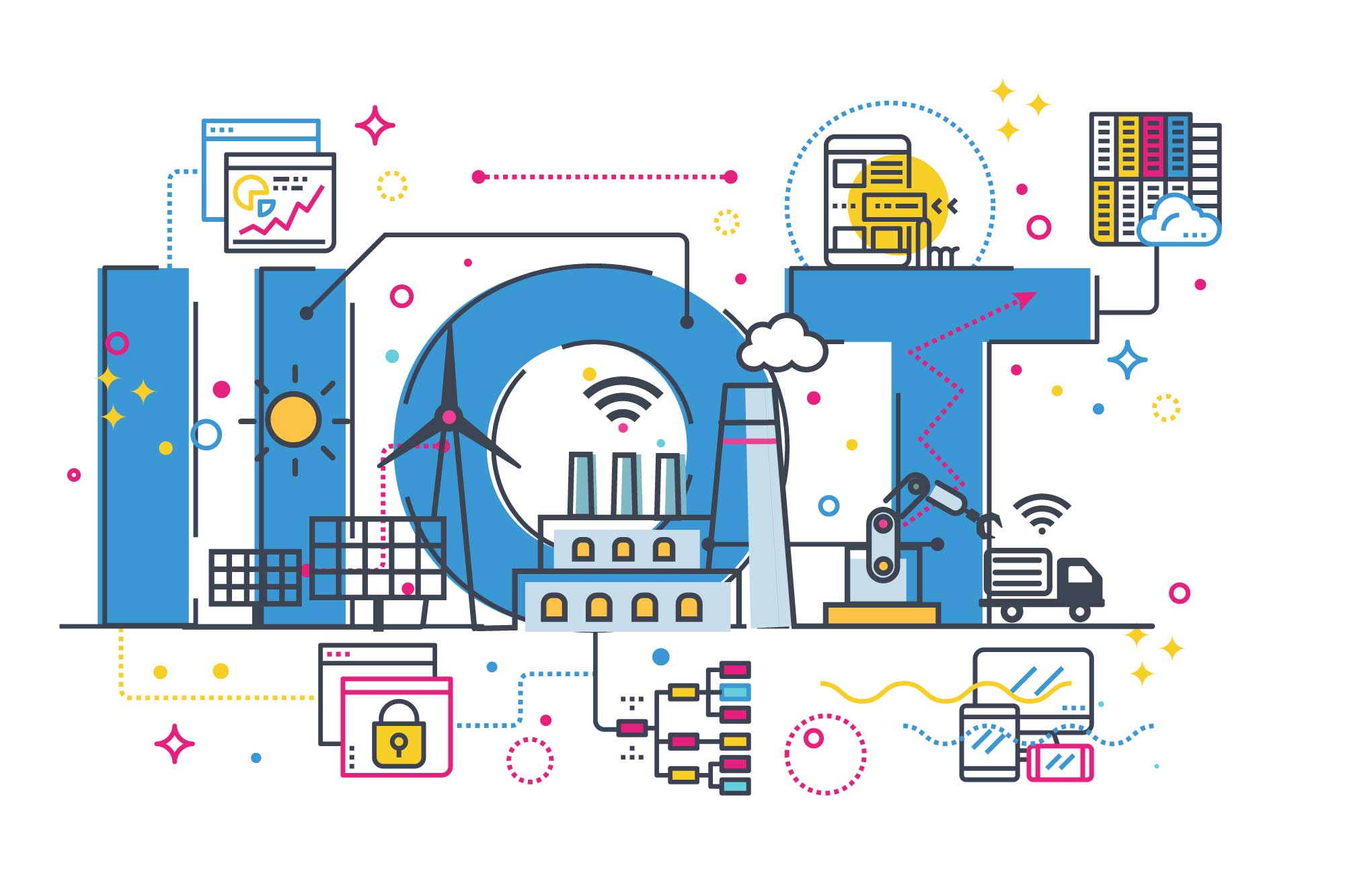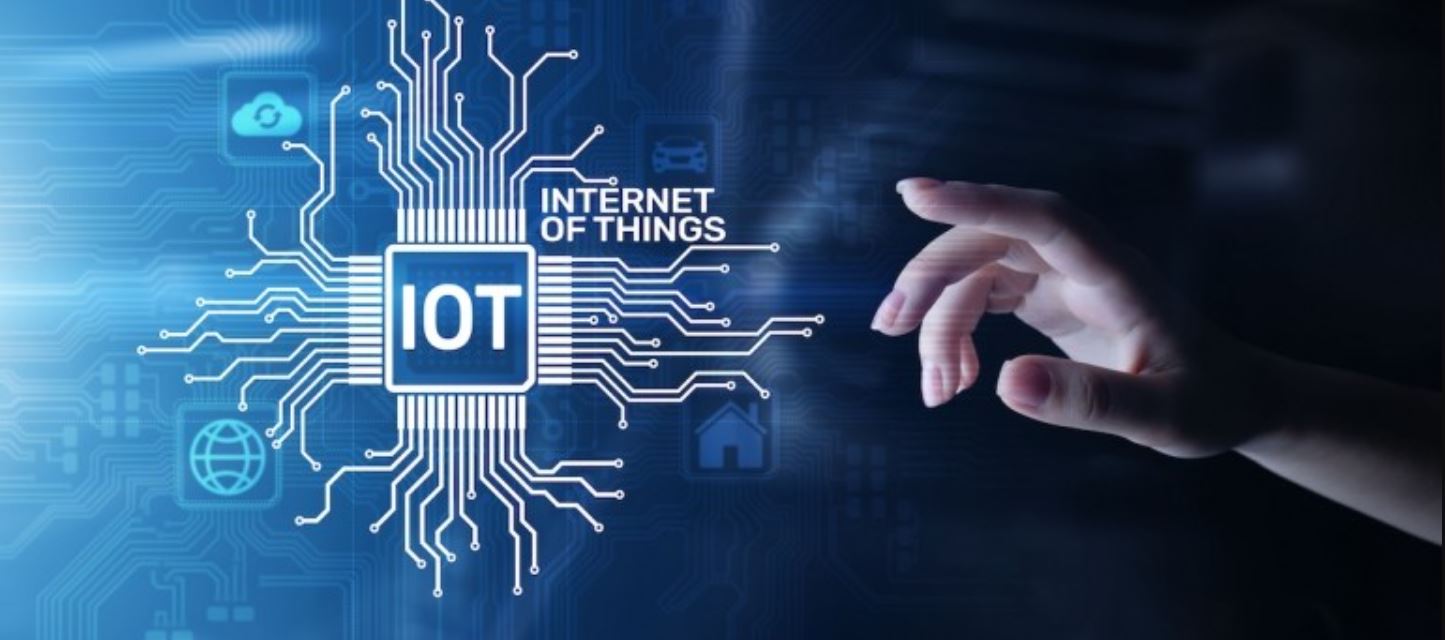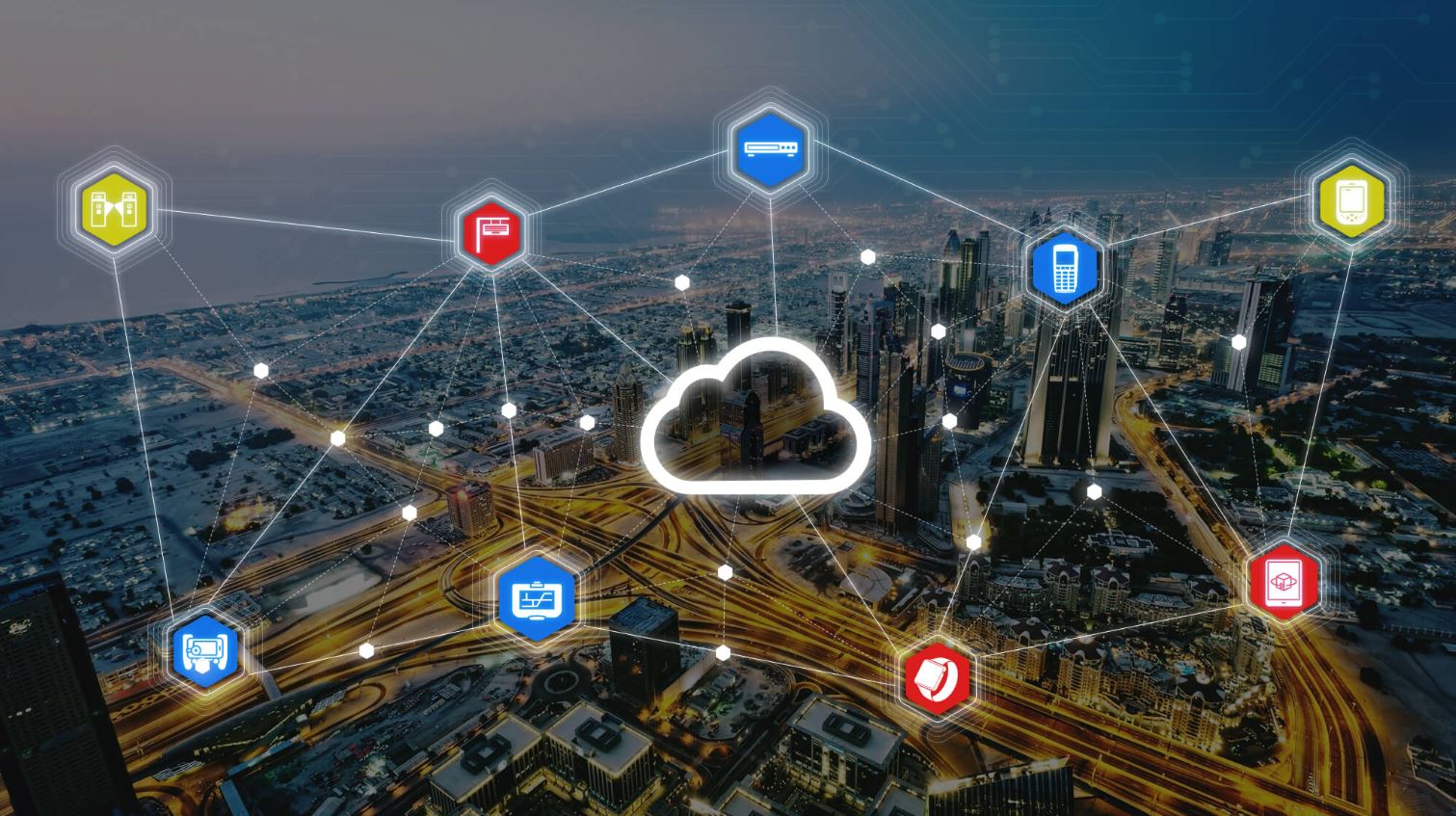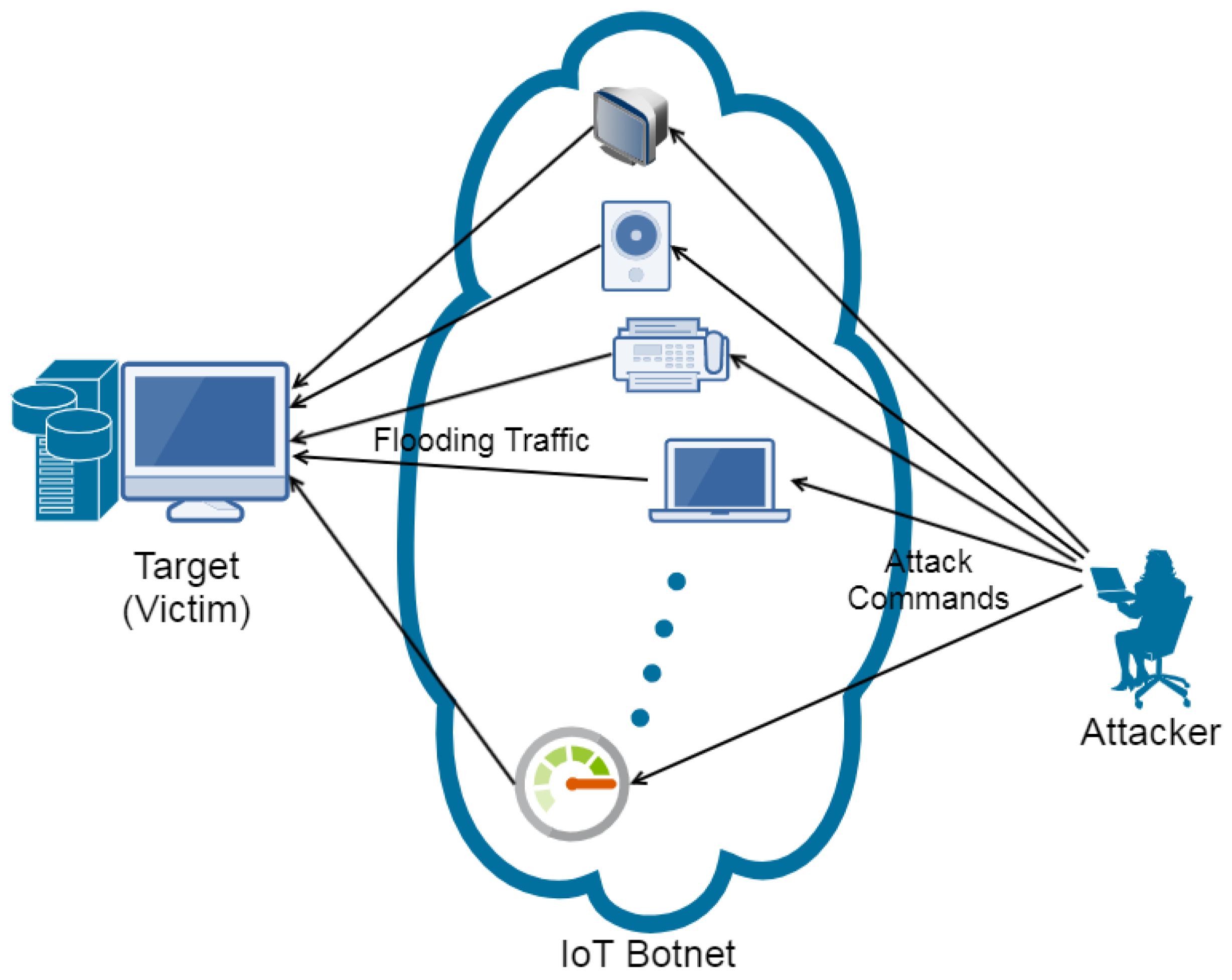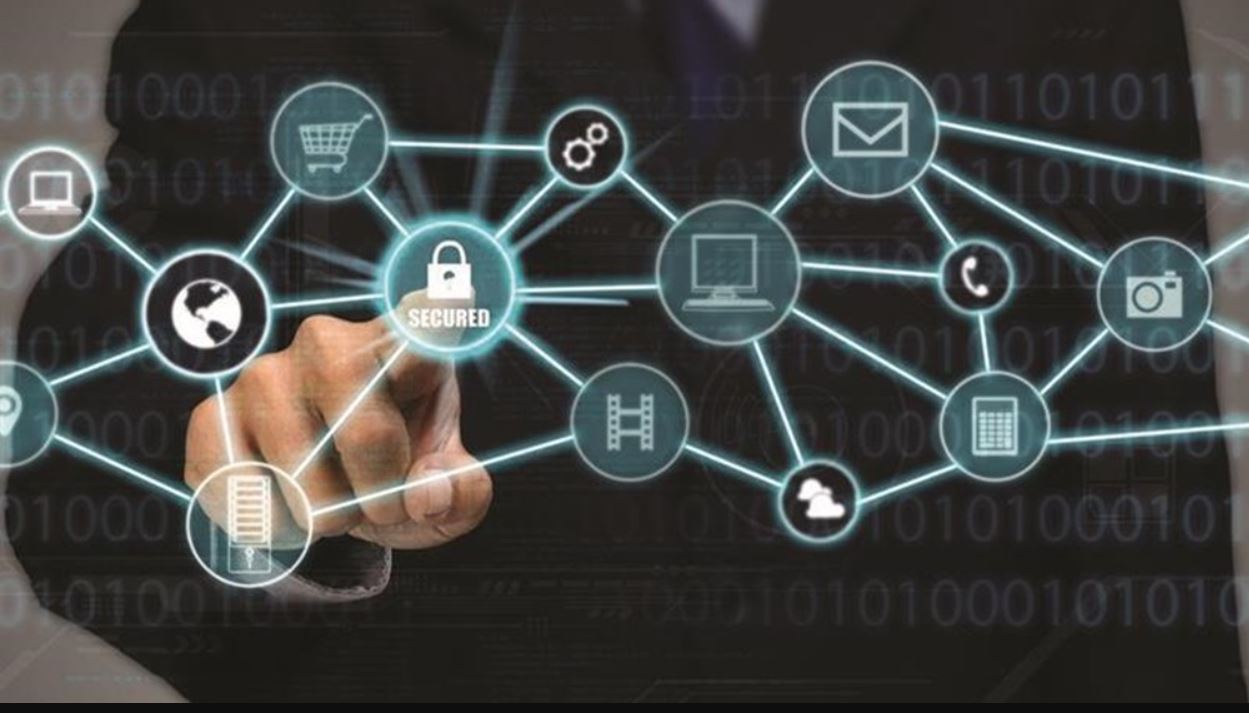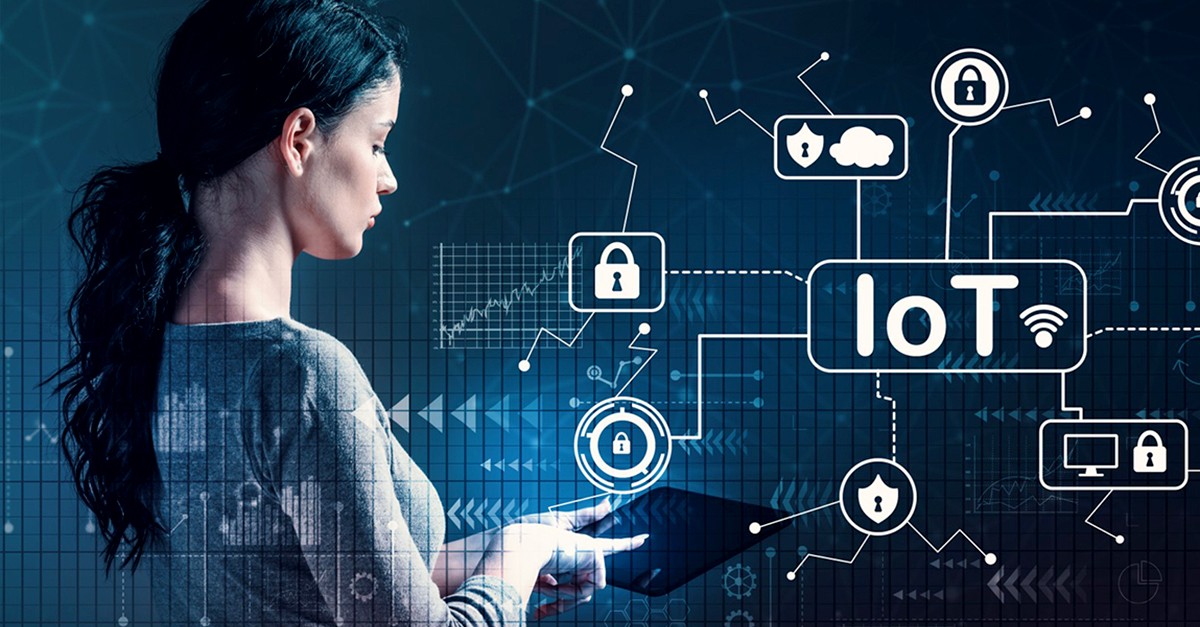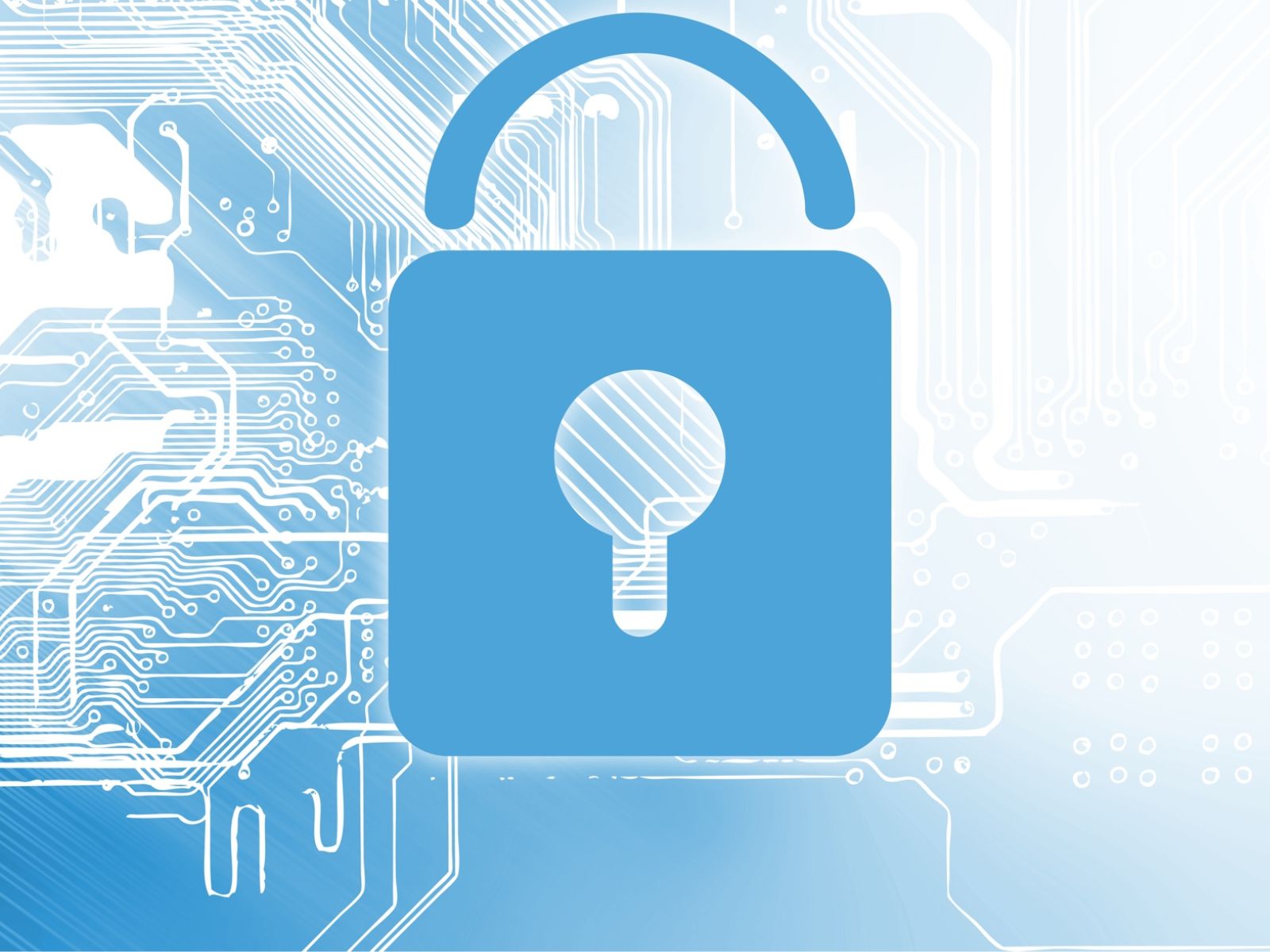Introduction
The Internet of Things (IoT) has emerged as a revolutionary technology that promises to transform the way we live, work, and interact with our surroundings. It has garnered significant attention in recent years, being hailed as a disruptive force across various industries. With its ability to connect everyday objects and devices to the internet, enabling them to collect and exchange data, the IoT opens up a world of possibilities and opportunities.
At its core, the IoT refers to a network of physical objects embedded with sensors, software, and connectivity that allows them to communicate and exchange data with each other and with humans. These objects can range from everyday household items like refrigerators and thermostats to industrial machinery and wearable devices. By seamlessly integrating the physical and digital worlds, the IoT has the potential to revolutionize numerous sectors, from healthcare and manufacturing to transportation and agriculture.
The key components of the IoT include sensors, actuators, connectivity, and data analytics. Sensors are used to collect data from the surrounding environment, while actuators enable the IoT devices to interact with their environment. Connectivity, in the form of wireless networks, enables the devices to communicate with each other and with the cloud. Data analytics plays a crucial role in processing the vast amounts of data generated by IoT devices and extracting valuable insights.
The applications of IoT are vast and diverse, with organizations across various industries leveraging its potential to improve efficiency, enhance productivity, and deliver new and innovative services. In healthcare, IoT devices can monitor vital signs and help in remote patient monitoring, enabling better healthcare outcomes and reducing healthcare costs. In manufacturing, IoT-powered systems can optimize production processes, minimize downtime, and enable predictive maintenance. Smart cities can use IoT technology to optimize resource allocation, improve traffic management, and enhance the overall quality of life for residents.
While the benefits of IoT are undoubtedly significant, traditional businesses face various challenges in adopting and integrating IoT technologies. These challenges include data privacy and security concerns, compatibility issues with existing infrastructure, and the need for skilled personnel to manage and analyze the data collected by IoT devices. Furthermore, the ubiquity of IoT devices can lead to an overload of data, making it critical for organizations to develop robust data management and analytics strategies.
The disruptive nature of IoT lies in its ability to transform existing business models and create new value propositions. By connecting physical objects to the internet and equipping them with the capability to gather and share data, the IoT opens up avenues for innovation, efficiency gains, and new revenue streams. Traditional businesses need to adapt and embrace this technology to stay competitive in the rapidly evolving digital landscape.
Definition of IoT
The Internet of Things (IoT) refers to the network of physical objects or “things” that are embedded with sensors, software, and connectivity, enabling them to collect and exchange data with each other and the cloud. These objects can include everyday devices such as smartphones, home appliances, wearables, as well as industrial equipment and infrastructure.
The concept of IoT revolves around connecting these objects to the internet, allowing them to communicate and interact with each other and humans in real-time. The objects in the IoT ecosystem gather data through sensors, which are capable of monitoring various environmental aspects such as temperature, humidity, motion, and location. This data is then transmitted and processed through the internet, allowing for analysis, storage, and insights that can be used to make informed decisions or trigger actions.
What sets IoT apart from other technologies is its ability to enable devices to interact with their environment and perform tasks without human intervention. For example, IoT-enabled smart thermostats can automatically adjust room temperature based on occupancy and outside weather conditions, optimizing energy consumption and ensuring comfortable living spaces.
The connectivity aspect of IoT plays a crucial role in enabling seamless communication between devices, usually through wireless networks such as Wi-Fi, Bluetooth, or cellular networks. This connectivity allows data to flow efficiently, making it possible for objects to not only communicate with each other but also to connect to cloud platforms where data analysis and storage take place.
Data analytics is an integral part of IoT, as it is the process of extracting valuable insights from the massive amounts of data generated by IoT devices. By analyzing this data, businesses and organizations can gain actionable insights, make informed decisions, and identify patterns or trends that can improve operations, optimize resource allocation, and enhance overall efficiency.
Overall, the IoT represents a paradigm shift in how we interact with and manage our surroundings. It has the potential to transform industries, improve quality of life, and drive innovation. As more objects and devices become connected, the IoT ecosystem will continue to expand, ushering in new possibilities and opportunities for businesses and individuals alike.
Key Components of IoT
The Internet of Things (IoT) ecosystem consists of several key components that work together to enable the seamless flow of data between devices, the cloud, and humans. These components play a crucial role in the functioning and effectiveness of IoT systems. Let’s take a closer look at each of these components:
- Sensors: Sensors are one of the core elements of IoT. They are responsible for collecting data from the environment or the objects they are embedded in. These sensors can gather information such as temperature, humidity, pressure, location, and more. By capturing real-time data, sensors provide valuable insights that drive decision-making and trigger appropriate actions.
- Actuators: Actuators are devices that enable IoT devices to interact with the physical environment. They take various forms, such as motors, switches, and valves. Actuators receive instructions from the IoT system based on the data collected by sensors and facilitate physical changes or movements. For example, actuators can control the opening and closing of valves in an irrigation system based on the moisture levels detected by sensors in the soil.
- Connectivity: Connectivity is the backbone of IoT systems, enabling devices to communicate and share data with each other and external systems. Wireless technologies like Wi-Fi, Bluetooth, and cellular networks are commonly used for IoT connectivity. With reliable and secure connectivity, IoT devices can transmit data to the cloud for storage, processing, and analysis.
- Cloud Platforms: Cloud platforms serve as the central hub for storing, processing, and analyzing the massive amounts of data generated by IoT devices. These platforms provide scalable and cost-effective infrastructure for data storage and computing resources. Cloud platforms also host applications and services that enable real-time monitoring, control, and management of IoT devices and systems.
- Real-Time Analytics: Real-time analytics is a critical component of IoT. It involves processing and analyzing data as it is generated by IoT devices, providing immediate insights and actionable information. Real-time analytics can detect anomalies, identify patterns, and trigger automated responses. This enables businesses to make data-driven decisions and respond quickly to changing conditions or events.
- Security: Security is paramount in IoT systems due to the sensitive and personal nature of the data being collected and transmitted. Robust security measures are implemented to protect data privacy, prevent unauthorized access, and ensure the integrity of IoT devices and networks. Encryption, authentication, and access controls are some of the security measures implemented to safeguard IoT systems.
These components work in tandem to create a seamless and efficient IoT ecosystem. By leveraging the power of sensors, actuators, connectivity, cloud platforms, real-time analytics, and security measures, IoT systems enable businesses to collect, analyze, and utilize vast amounts of data to drive innovation, improve efficiency, and deliver new services and experiences.
Applications of IoT in Various Industries
The Internet of Things (IoT) has revolutionized various industries by offering innovative applications and transforming traditional business models. The seamless connectivity and data exchange enabled by IoT have paved the way for numerous advancements and efficiencies across sectors. Let’s explore some of the key industries and how they are harnessing the power of IoT:
- Healthcare: IoT has transformed the healthcare industry with applications such as remote patient monitoring, smart wearables, and connected medical devices. IoT-enabled wearables can track vital signs, monitor activity levels, and provide real-time health data. Remote patient monitoring through IoT devices allows healthcare providers to monitor patients’ conditions remotely and intervene when necessary, reducing the need for frequent hospital visits and enhancing patient care.
- Manufacturing: IoT has brought significant advancements to the manufacturing industry by enabling the concept of Industry 4.0 or smart manufacturing. IoT sensors embedded in machines and production lines collect real-time data, allowing for predictive maintenance, optimized workflows, and improved operational efficiency. Manufacturers can monitor equipment performance, detect anomalies, and proactively address maintenance or production issues, minimizing downtime and maximizing productivity.
- Agriculture: IoT has revolutionized the agricultural sector, enabling precision farming and efficient resource management. IoT sensors monitor soil moisture levels, temperature, and crop health, providing farmers with real-time insights. This data helps optimize irrigation schedules, manage fertilizer application, and detect crop diseases or pest infestations promptly. IoT-powered smart farming solutions enhance crop yield, improve resource utilization, and promote sustainable farming practices.
- Transportation: IoT is driving transformative changes in transportation by enabling the development of smart cities and connected vehicles. IoT connectivity allows for real-time traffic monitoring and optimization. Smart transportation systems use IoT data to manage traffic flow, optimize public transportation routes, and guide drivers to available parking spaces. Connected vehicles enable remote diagnostics, predictive maintenance, and enhanced driver safety features, contributing to safer and more efficient transportation systems.
- Retail: IoT is reshaping the retail industry by creating a more personalized and immersive shopping experience. IoT-powered solutions include smart shelves that track inventory levels in real-time, beacons that provide personalized promotions to shoppers based on their location, and connected fitting rooms that suggest complementary products. These applications improve inventory management, enhance customer engagement, and drive sales conversion rates.
- Energy: IoT is revolutionizing the energy sector with smart grid systems, energy management solutions, and smart home technologies. IoT sensors and devices monitor energy consumption, allowing for optimized allocation and improved energy efficiency. Smart home devices enable consumers to remotely control energy usage and receive real-time insights on their energy consumption, leading to reduced costs and enhanced sustainability.
These are just a few examples of the vast applications of IoT across industries. IoT’s ability to connect devices, gather real-time data, and enable intelligent decision-making is transforming traditional business practices and driving innovation. As IoT continues to evolve, it will unlock new opportunities for efficiency, automation, and improved customer experiences in various sectors.
Impact of IoT on Traditional Businesses
The Internet of Things (IoT) has had a profound impact on traditional businesses, disrupting existing business models and introducing new opportunities and challenges. By connecting physical objects to the internet and equipping them with the ability to collect and exchange data, IoT has transformed numerous industries. Let’s explore the key ways in which IoT has impacted traditional businesses:
- Improved Operational Efficiency: IoT enables businesses to optimize their operations and enhance efficiency. By collecting real-time data from IoT devices, businesses can gain insights into various aspects of their operations, such as equipment performance, energy consumption, and supply chain management. This data-driven approach enables businesses to make informed decisions, automate processes, and identify areas for improvement, leading to increased efficiency and productivity.
- Enhanced Customer Experience: IoT allows businesses to deliver personalized and seamless customer experiences. By leveraging customer data from IoT devices, businesses can gain a deeper understanding of customer preferences and behavior, enabling tailored product recommendations, targeted advertising, and improved customer support. IoT-powered solutions, such as smart homes and connected cars, contribute to a more convenient and connected experience for customers.
- New Revenue Streams: IoT opens up new revenue streams for traditional businesses. By leveraging IoT data, businesses can create value-added services and solutions. For example, companies can offer predictive maintenance services to customers based on real-time data collected from IoT-enabled equipment. Additionally, businesses can monetize data generated by IoT devices through data analytics services or by selling aggregated and anonymized data to third parties.
- Remote Monitoring and Maintenance: IoT enables businesses to remotely monitor and maintain their assets. IoT devices can collect data from equipment, such as industrial machinery or infrastructure, enabling businesses to identify maintenance needs or potential failures in real-time. This proactive approach reduces downtime, improves maintenance efficiency, and minimizes operational costs for businesses.
- Supply Chain Optimization: IoT has transformed supply chain management by providing real-time visibility and traceability. Businesses can track inventory levels, monitor product conditions during transportation, and streamline logistics processes through IoT sensors, RFID tags, and connectivity. This transparency enables businesses to optimize inventory management, reduce stockouts and overstocking, and improve overall supply chain efficiency.
- Data-driven Decision Making: IoT generates vast amounts of data, providing businesses with valuable insights to drive decision-making. Through IoT analytics, businesses can make data-driven decisions based on real-time information. This enables businesses to identify trends, uncover opportunities, and improve strategic planning. Additionally, predictive analytics can help businesses anticipate customer needs, optimize resource allocation, and mitigate risks.
While IoT presents numerous opportunities for traditional businesses, it also brings challenges. Businesses must address data privacy and security concerns, ensure compatibility with existing systems, and invest in the necessary infrastructure and talent to fully leverage IoT technology. However, by embracing IoT and adapting their business models, traditional companies can stay competitive in the digital age, deliver enhanced value to customers, and unlock new avenues for growth.
Benefits of IoT
The Internet of Things (IoT) offers a multitude of benefits, revolutionizing the way we live and work. By connecting everyday objects to the internet and enabling them to collect and exchange data, IoT opens up a world of new possibilities. Let’s explore some of the key benefits of IoT:
- Improved Efficiency and Productivity: IoT allows businesses and individuals to optimize their processes, leading to improved efficiency and productivity. By collecting real-time data from IoT devices, businesses can monitor and analyze various aspects of their operations, such as equipment performance, energy usage, and inventory levels. This data-driven approach enables businesses to identify areas for improvement, automate tasks, and streamline workflows, resulting in increased operational efficiency and productivity.
- Enhanced Safety and Security: IoT enhances safety and security in various domains. For example, in the healthcare industry, IoT devices can monitor patient vitals and alert healthcare providers in case of emergencies. In the home, IoT-enabled security systems can detect intrusions and send immediate notifications to homeowners. Moreover, IoT sensors can track environmental conditions in industries such as mining or chemical manufacturing, ensuring a safer working environment for employees.
- Cost Savings: IoT can lead to significant cost savings for businesses and individuals. By optimizing resource utilization and reducing waste, businesses can lower operational costs. For example, IoT sensors can monitor energy consumption and make adjustments to optimize usage, resulting in reduced utility bills. In manufacturing, IoT-powered predictive maintenance can prevent equipment failures, reducing downtime and costly repairs. Additionally, IoT-enabled supply chain management can minimize inventory holding costs and optimize logistics, resulting in cost savings and improved profitability.
- Improved Decision Making: IoT generates a vast amount of data that can be analyzed to gain valuable insights. With real-time data analytics, businesses can make informed and data-driven decisions. This enables proactive responses to changing conditions, helps identify trends and patterns, and allows for better forecasting and planning. Moreover, IoT data can provide actionable insights into customer behavior, allowing businesses to tailor their products and services to meet customer needs.
- Smart Living and Sustainability: IoT brings the concept of smart living to reality by seamlessly integrating technology into our homes and cities. IoT-enabled smart homes can automate tasks, enhance energy efficiency, and improve overall comfort. Smart cities leverage IoT to optimize resource usage, improve traffic flow, and enhance environmental sustainability. By connecting various systems and devices, IoT enables a more sustainable and environmentally friendly way of living.
- Improved Quality of Life and Healthcare: IoT plays a crucial role in improving the quality of life for individuals. IoT-enabled wearable devices can track and monitor health parameters, allowing individuals to take proactive measures for self-care. IoT also enables remote patient monitoring, allowing healthcare providers to remotely monitor patients’ conditions and provide timely interventions. This not only improves overall well-being but also reduces healthcare costs by minimizing hospital visits and readmissions.
These are just a few of the many benefits that IoT brings to businesses and individuals. As IoT continues to evolve, we can expect further advancements that will revolutionize industries, drive innovation, and improve our daily lives.
Challenges and Risks Associated with IoT
While the Internet of Things (IoT) offers significant benefits, it also presents challenges and risks that businesses and individuals need to address. Understanding and managing these challenges is crucial for the successful adoption and implementation of IoT. Let’s explore some of the key challenges and risks associated with IoT:
- Security and Privacy: IoT introduces new security and privacy concerns. With a vast number of interconnected devices, the potential for unauthorized access, data breaches, and cyber-attacks increases. Weak security measures can expose sensitive data, such as personal information or intellectual property, to malicious actors. Additionally, the sheer volume of data collected by IoT devices raises privacy concerns, as personal information may be inadvertently shared or misused. Robust security protocols, encryption methods, and privacy policies are essential to mitigate these risks.
- Interoperability: IoT devices often come from different manufacturers and may use different communication protocols or standards. This lack of interoperability poses a challenge in integrating and coordinating devices within IoT ecosystems. Ensuring that devices can communicate and exchange data seamlessly requires standardized protocols and frameworks. Without interoperability, the full potential of IoT in terms of scalability and integration cannot be realized.
- Data Management and Analytics: The vast amounts of data generated by IoT devices present challenges in terms of data management and analytics. IoT systems produce a constant stream of data that needs to be stored, processed, and analyzed in a timely manner. Handling and managing this data requires robust infrastructure, storage solutions, and data analytics capabilities. Moreover, extracting meaningful insights from the vast and diverse IoT data requires advanced analytics tools and expertise.
- Scalability and Complexity: IoT ecosystems can quickly become complex and challenging to scale. As the number of devices and data increases, managing and maintaining the infrastructure required to support IoT can become overwhelming. Scaling IoT operations requires careful planning, infrastructure investments, and capacity management to ensure smooth and reliable operations.
- Ethical and Legal Challenges: IoT raises ethical and legal questions related to data ownership, consent, and accountability. The collection and use of personal data by IoT devices may raise privacy concerns and ethical considerations. Additionally, regulations and laws surrounding data protection and privacy need to be carefully navigated to ensure compliance and establish trust among users.
- Power Consumption and Energy Efficiency: IoT devices consume power, and the sheer number of devices connected to the internet can strain energy resources. Balancing the need for connectivity and functionality with energy efficiency is crucial. IoT devices need to be designed with energy-efficient hardware and software to minimize power consumption and maximize battery life. Moreover, implementing energy management strategies and renewable energy sources can contribute to sustainable IoT implementations.
Addressing these challenges and risks requires a holistic approach that encompasses technological advancements, robust security measures, privacy frameworks, industry standards, and user education. By proactively addressing these challenges, businesses and individuals can unlock the full potential of IoT while ensuring the privacy, security, and ethical use of data.
IoT as a Disruptive Technology
The Internet of Things (IoT) has emerged as a disruptive technology that is changing the way we live, work, and interact with our surroundings. By connecting everyday objects and devices to the internet, IoT is transforming traditional industries and business models. Here’s a closer look at why IoT is considered a disruptive force:
Transformation of Industries: IoT is transforming industries across the board. It enables organizations to collect and analyze data from various sources, providing valuable insights and paving the way for innovative solutions. Traditional industries such as healthcare, manufacturing, agriculture, and transportation are being revolutionized by IoT applications, opening up avenues for efficiency gains, cost savings, and improved customer experiences.
New Business Opportunities: IoT creates new business opportunities and revenue streams. By connecting devices and gathering data, businesses can offer value-added services and personalized experiences. For example, a traditional appliance manufacturer can evolve into a provider of smart home solutions, offering connected devices and services that enhance convenience, energy efficiency, and security.
Data-Driven Decision Making: IoT generates vast amounts of data that can be harnessed for data-driven decision making. By analyzing IoT data in real-time, organizations can gain insights into customer preferences, operational efficiency, and product performance. This enables businesses to make informed decisions, optimize processes, and identify new opportunities for growth.
Disruption of Traditional Business Models: IoT disrupts traditional business models by enabling innovative approaches. For example, the rise of the sharing economy, facilitated by IoT-enabled platforms, has transformed industries such as transportation and hospitality. IoT-powered platforms connect individuals who own underutilized assets, such as cars or rental properties, with those in need, creating new business models that challenge traditional ownership and usage paradigms.
Improved Connectivity and Integration: IoT enhances connectivity and integration by seamlessly connecting devices, systems, and humans. This creates a more interconnected and intelligent ecosystem, enabling improved collaboration and coordination. For example, in smart cities, IoT enables the integration of various systems such as traffic management, energy distribution, and waste management, leading to greater efficiency and improved quality of life.
Agility and Innovation: IoT fosters agility and innovation by enabling rapid development and deployment of new solutions. With IoT, businesses can prototype and iterate on ideas quickly, minimizing time to market. The flexibility of IoT systems also allows businesses to adapt and scale their operations more easily, facilitating innovation and experimentation.
Shift from Ownership to Service-based Economy: IoT is shifting the focus from ownership to service-based models. Businesses are increasingly offering products as services, where customers pay for the utility and outcome rather than owning the physical item. This shift has implications for various industries, including home appliances, mobility, and manufacturing, and requires businesses to redefine their value propositions and revenue models.
In summary, the Internet of Things (IoT) is a disruptive technology that is transforming industries, creating new business opportunities, enabling data-driven decision making, and challenging traditional business models. As IoT continues to evolve, organizations need to embrace this technology, adapt their strategies, and capitalize on its potential to stay competitive in the rapidly changing digital landscape.
Examples of Disruption Caused by IoT
The Internet of Things (IoT) has caused significant disruption across various industries, transforming traditional business models and creating new opportunities. Here are some compelling examples of how IoT has disrupted different sectors:
- Transportation: The transportation industry has seen major disruption with the advent of IoT. Ride-sharing platforms, powered by IoT-enabled mobile apps, have revolutionized the way people travel, disrupting the traditional taxi industry. These platforms connect drivers with passengers in real-time, providing more efficient and convenient transportation options. Additionally, IoT has enabled the development of connected and autonomous vehicles, paving the way for safer and more efficient transportation systems.
- Retail: IoT has transformed the retail industry, introducing concepts such as smart stores and personalized shopping experiences. Beacon technology, for example, allows retailers to track customer movements in stores and provide targeted advertisements or discounts in real-time. IoT-powered inventory management systems ensure that products are always available on store shelves, reducing out-of-stock situations and improving customer satisfaction.
- Healthcare: IoT has disrupted the healthcare industry by enabling remote patient monitoring and telehealth services. Wearable devices and sensors can collect real-time health data and transmit it to healthcare providers, allowing for proactive interventions and remote consultation. This has not only improved patient care but has also reduced healthcare costs and hospital visits.
- Agriculture: IoT has revolutionized agriculture by introducing precision farming techniques. IoT sensors in fields collect data on soil moisture, temperature, and nutrient levels, enabling farmers to optimize irrigation and fertilization, resulting in improved crop yields. Additionally, connected livestock monitoring systems can track animal health and identify early signs of diseases, enabling prompt interventions and reducing losses.
- Energy Management: IoT has disrupted the energy sector by enabling smarter and more efficient energy management. Smart grid systems use IoT to monitor and control energy distribution, optimizing consumption and reducing waste. IoT sensors on power lines can detect faults and potential failures, allowing for quicker responses and improving overall reliability of the grid. Additionally, IoT-powered smart homes enable homeowners to monitor and control their energy usage, reducing costs and promoting sustainability.
- Logistics and Supply Chain: IoT has transformed logistics and supply chain management by providing real-time visibility and tracking capabilities. IoT sensors embedded in packages or containers allow businesses to track the location, condition, and movement of goods throughout the supply chain. This improves efficiency, reduces delays, prevents losses, and enhances overall supply chain transparency.
These are just a few examples of the disruption caused by IoT in different industries. The ability of IoT to connect devices, collect data, and enable intelligent decision-making has revolutionized traditional business models, leading to increased efficiency, cost savings, and improved customer experiences. As IoT continues to evolve, we can expect even more disruptive innovations that will reshape industries and unlock new possibilities.
Conclusion
The Internet of Things (IoT) has emerged as a disruptive force, reshaping industries and transforming traditional business models. It brings countless opportunities for businesses and individuals, enabling improved efficiency, enhanced customer experiences, and innovative solutions. From healthcare and transportation to retail and agriculture, IoT has revolutionized various sectors and opened up new avenues for growth.
By connecting physical objects to the internet, IoT has enabled seamless data exchange, real-time monitoring, and intelligent decision-making. This connectivity has led to improved operational efficiency, cost savings, and optimized resource utilization. IoT devices, sensors, and data analytics have become invaluable tools for businesses to drive innovation, make data-driven decisions, and gain a competitive edge in the digital landscape.
However, along with the transformative benefits, IoT also presents challenges and risks. Security and privacy concerns, interoperability issues, and data management complexities require careful consideration and robust solutions. Organizations must prioritize establishing robust security measures, adhering to privacy regulations, promoting interoperability, and developing effective data management strategies to fully capitalize on the potential of IoT.
As IoT continues to evolve, the proliferation of connected devices, advancements in connectivity technologies, and the increasing availability of data will fuel further disruption across industries. Traditional businesses need to embrace IoT and adapt their strategies to remain competitive in the ever-evolving digital era. By leveraging IoT technologies, they can unlock new revenue streams, improve customer experiences, and drive innovation.
In conclusion, the Internet of Things is a game-changing technology that has the power to revolutionize industries, enhance our lives, and create a more connected and intelligent world. By harnessing the potential of IoT, businesses and individuals can tap into new possibilities, disrupt traditional norms, and embrace a future of unprecedented innovation and efficiency.







